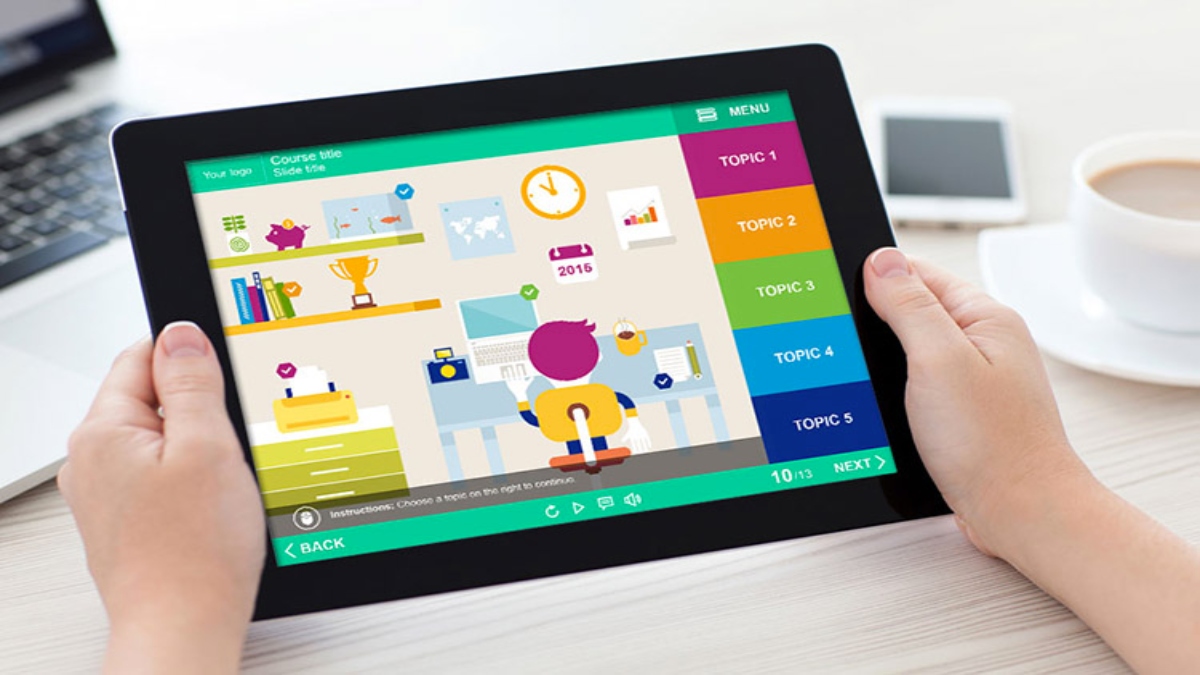In today’s knowledge-driven world, the demand for accessible and engaging learning experiences is higher than ever. E-learning apps have emerged as powerful tools, offering flexible and interactive learning opportunities for individuals and organizations alike.
This comprehensive guide takes you through the exciting journey of e-learning app development, from the initial spark of an idea to the final launch and beyond.
Step 1: Unearthing the Need – Defining Your Concept
The foundation of any successful e-learning app lies in a well-defined concept. Here’s what you need to consider:
- Identifying the Learning Gap: What knowledge or skills do you want learners to acquire? Analyze market needs and identify areas where an e-learning app can provide a valuable solution.
- Target Audience: Who are you building this app for? Understanding your target audience’s demographics, learning styles, and technical proficiency is crucial for tailoring the app’s content and functionalities.
- Learning Objectives: What specific knowledge or skills should learners walk away with after using your app? Clearly defined learning objectives will guide content creation and assessment design.
Step 2: Building a Strong Foundation – Content Development
Compelling and informative content is the heart of your e-learning app. Here are key strategies for success:
- Engaging Content Formats: Move beyond static text. Utilize a variety of formats like video lectures, interactive simulations, infographics, and quizzes to keep learners engaged.
- Microlearning Approach: Break down complex topics into bite-sized modules that learners can easily consume in short bursts. This caters to busy schedules and promotes better knowledge retention.
- Subject Matter Expertise: Ensure your content is accurate, up-to-date, and created by subject matter experts in the field. Credibility is essential for building trust with learners.
Step 3: Gamification – The Engagement Booster (Optional)
Gamification can be a powerful tool to incentivize learning and boost user engagement. Consider incorporating elements such as:
- Points & Badges: Rewarding learners with points for completing tasks and badges for achieving milestones fosters a sense of accomplishment and motivates further learning.
- Leaderboards & Challenges: Healthy competition through leaderboards and in-app challenges can add a layer of fun and encourage learners to push their limits.
- Interactive Activities: Gamified quizzes, simulations, and role-playing scenarios can make learning more interactive and memorable.
Step 4: Designing for Success – User Interface & User Experience (UI/UX) Design
A user-friendly and intuitive interface is crucial for a positive learning experience. Here’s what to consider:
- Mobile-First Design: With the rise of mobile learning, prioritize a responsive and user-friendly interface that adapts seamlessly across different devices.
- Simple Navigation: Ensure your app is easy to navigate, with clear menus, intuitive icons, and a logical flow of information.
- Visually Appealing Design: An aesthetically pleasing interface with engaging visuals can significantly enhance user experience and learner motivation.
Step 5: Building for the Future – Development & Testing
Once the design is finalized, the development phase begins. This involves:
- Choosing the Right Development Approach: Native apps offer the most functionality but come at a higher cost. Consider hybrid or web-based options for wider compatibility.
- Development Tools & Technologies: Choose development tools and technologies that align with your app’s functionalities and budget constraints.
- Rigorous Testing: Thorough testing across different devices and platforms is vital to ensure a bug-free and optimized app experience.
Step 6: Launch and Beyond – Deployment & Ongoing Maintenance
Launching your app is just the beginning. Here’s what comes next:
- App Store Optimization (ASO): Optimize your app store listing with relevant keywords and compelling descriptions to increase discoverability.
- Marketing & Promotion: Develop a comprehensive marketing strategy to reach your target audience and generate excitement about your app.
- Analytics & User Feedback: Continuously track user behavior and gather feedback to understand user needs and identify areas for improvement.
- Updates & Maintenance: Regular updates with new content, bug fixes, and security enhancements are crucial for user retention and app longevity.
Building a Winning Team:
Developing a successful e-learning app often requires a collaborative effort. Partnering with a reputable e-learning app development company can bring valuable expertise to the table:
- Instructional Designers: They can help structure your learning content and translate your vision into engaging learning modules.
- E-Learning Developers: With their technical know-how, they translate design concepts into a functional and user-friendly app.
- Project Managers: They ensure the project stays on track, manages timelines and budgets, and facilitates communication between all stakeholders.
- QA Testers: They perform rigorous testing to identify and fix bugs before launch.
- Graphic Designers: They create visually appealing interfaces and engaging learning materials.
- Conclusion
- Developing a successful e-learning app requires a clear vision, meticulous planning, and the right team in place. By following this comprehensive guide and partnering with an experienced e-learning app development company, you can transform your concept into a powerful learning tool that empowers learners and achieves your training objectives.
- Ready to Take Action?
- The world of e-learning presents exciting opportunities to bridge knowledge gaps and foster lifelong learning. With a well-designed and engaging e-learning app, you can become a leader in the educational technology space, making a lasting impact on learners of all ages and backgrounds.
